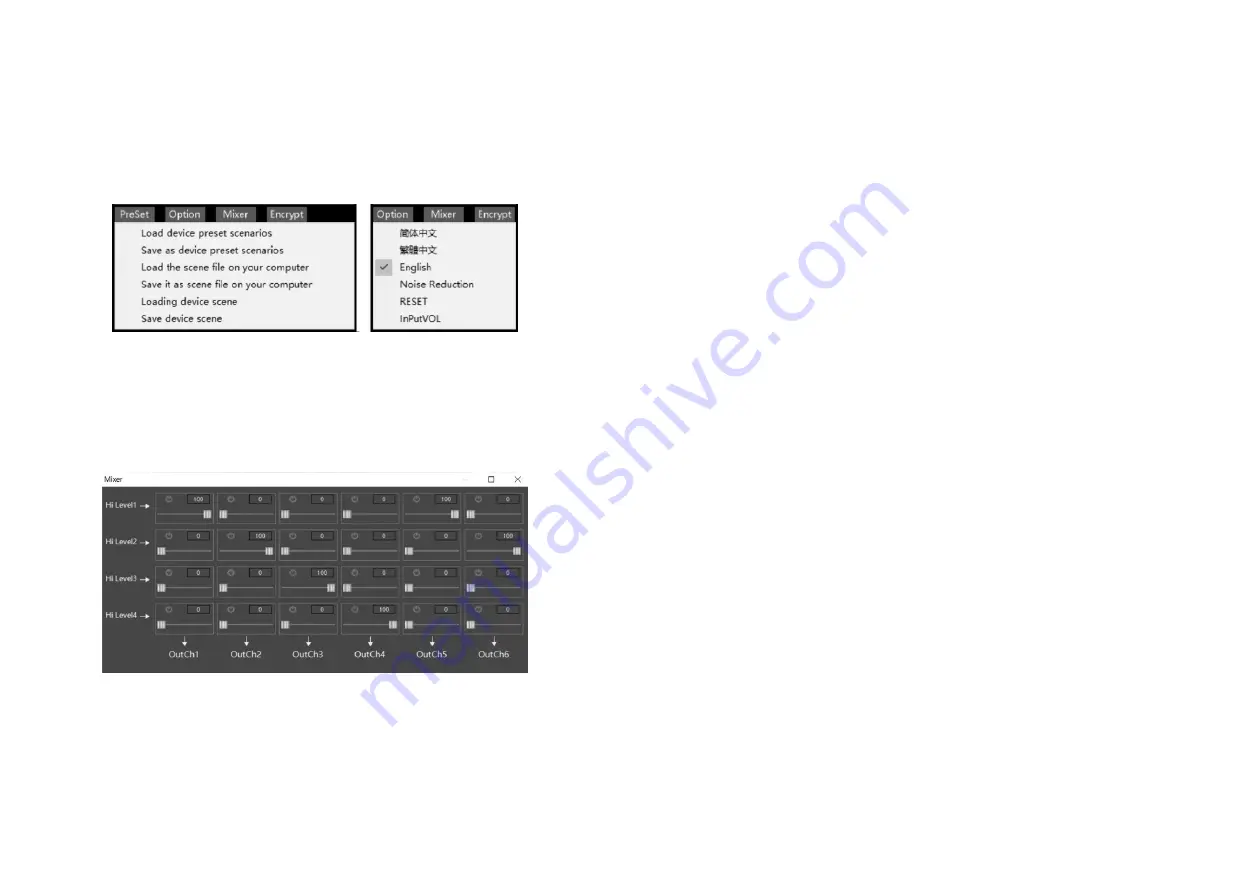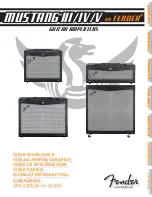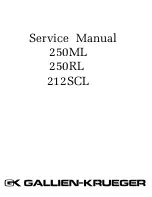
12
13
File Menu
At the very top of the GUI there is the File Menu. The
Preset
button is where you will save
setups to memory presets and load setups from those saved. Here you can also save
setups into your PC.
Option
button let you choose between Languages, Noise Reduction,
Reset function, Input volume, and informations about your device and software.
MIX
will
open the I/O Matrix screen (see below). With
Encrypt
you can manage your Password.
I/O Matrix
With the Mixing Set, you can manually determine which inputs will be used for each output
(processing channel) and how much of each input the output will receive. The inputs are
listed down the left side and the output channels are listed across the bottom.
System Phasing
Before equalization you should assure that all speakers are in phase as a system at the
listening position. All speakers need to have the same polarity so they move the same
direction at the same time. If they are not, you will not be able to get a proper tune.
There are a number of methods for doing this. We offer one.
Tweeters (A)
: Mute all speakers except the tweeters and play a high female vocal solist.
You should hear the voice at a single point near upper middle of the windshield. If the
speakers are out of phase the voice will not be localized but will seem to come from
everywhere. To test, using the Phase buttons, change the phase of the right speaker and
listen for the difference. Do this a couple of times as needed. The position that puts the
voice in a small single location on the window is the correct phase.
Tweeters (B)
: Note where the Tweeter center is located. It should be just slightly above
and to the left of the center of the windshield (for left hand drive cars). If it is off to the
opposite side of center or too far to the left, and if you have measured correctly, then you
have a gain difference and you can correct by a slight level adjustment reduce the right
tweeter to bring it left or reduce the left channel to take it right. No more that 1dB or
2dB. Now the tweeters are set. From here on out you cannot change the levels or phase
of either tweeter.
Mids, Mid-Woofers, and Subs
: Now mute the tweeters and un-mute the midranges.
The process is the same for each pair of speakers. The sound should come from a single
focused point near the center of the windshield. For midranges and larger drivers, you
want to use a deeper male vocal. The larger drivers are much easier to tell the differences
between in-phase and out of phase. Also, with the larger speakers you will hear a dramatic
reduction of bass if the speakers are out of phase. So, for midrange and larger speakers
you will look for a focused sound source in the windshield with stronger bass.
NOTE: Once each channel pair is adjusted, they cannot be separated. Any change of phase must be
done by the pair.
Phasing the pairs
: Again, listening to a single vocalist. Mute all channels again except
the tweeters. Then bring in the midranges. If these pairs are in proper phase the sound
should be near center in the upper part of the windshield. If they are not in phase the
sound will be pulled down lower. You can reverse the phase of BOTH mids now and
listen for the difference in the sound location. Choose the phase position that puts the
sound high near the center.
Once you have these phased you can bring in the mid-bass with the same process. Again,
the focus should be high in the dash. If the mid-bass is out of phase with the tweeters
and mids then they will pull the sound down toward the floor.
Woofers or Subs
: There will be bass! You have phased the woofers, so we know there
will be bass. What you need to listen for here is location, and mid-bass (something with
kick drums is ideal). Proper woofer phasing will work with the mid-bass drivers to give
good solid, crisp mid-bass. Out of phase will result in a soft, low-impact mid-bass. Bass
out of phase with the mid-bass will also be more located in the back of the vehicle while a
properly phased bass will blend better into the front soundstage.





























